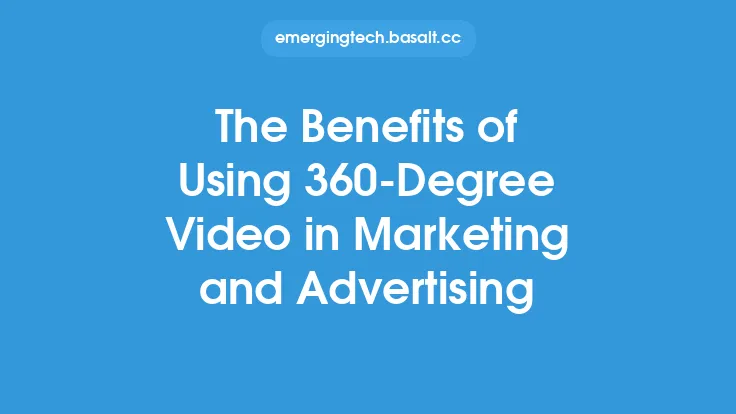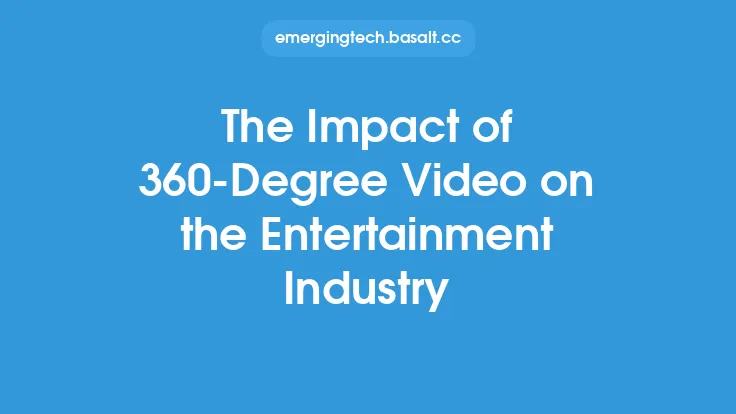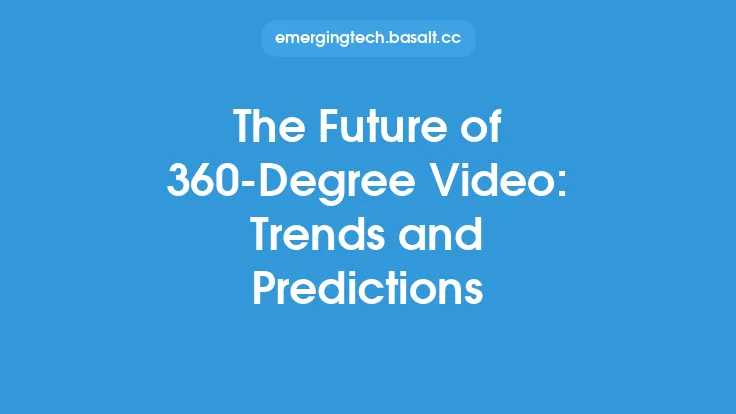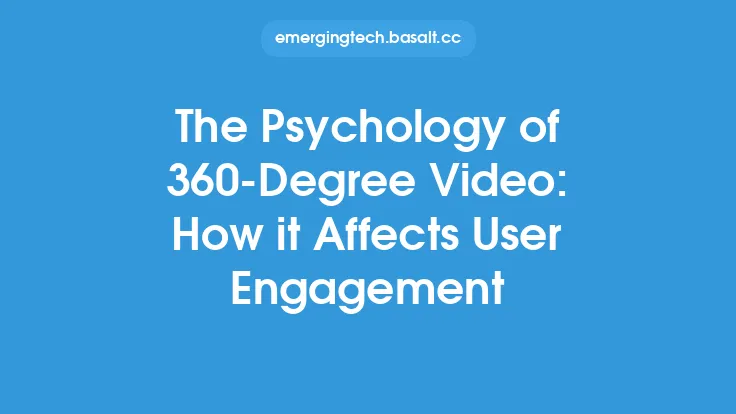The rise of 360-degree video has opened up new avenues for social media platforms to engage with their users. This immersive technology allows viewers to experience content from all angles, creating a more interactive and memorable experience. To unlock the potential of 360-degree video for social media, it's essential to understand the technical aspects, best practices, and strategies for creating and sharing this type of content.
Technical Requirements
To create and share 360-degree videos on social media, certain technical requirements must be met. First, a 360-degree camera is necessary to capture the footage. These cameras use multiple lenses to record a scene from all angles, resulting in a spherical video that can be viewed in all directions. Some popular 360-degree cameras include the GoPro Fusion, Ricoh Theta, and Samsung Gear 360. When choosing a camera, consider factors such as resolution, frame rate, and stitching quality, as these can affect the overall quality of the video.
In addition to the camera, a computer with specialized software is needed to stitch the footage together and edit the video. Stitching involves combining the multiple camera angles into a single, seamless video. Popular stitching software includes Adobe Premiere Pro, Final Cut Pro, and Mistika VR. When editing 360-degree video, it's essential to consider the unique challenges of working with immersive content, such as ensuring that the video is properly formatted for different social media platforms and that the audio is spatially aware.
Best Practices for Creating 360-Degree Video Content
To create effective 360-degree video content for social media, several best practices should be followed. First, consider the story or message being conveyed and how it can be enhanced by the immersive nature of 360-degree video. Plan the shoot carefully, taking into account the location, lighting, and camera placement. When filming, use a tripod or stabilizer to minimize camera shake and ensure smooth motion.
When editing the video, keep in mind the unique challenges of 360-degree content, such as dealing with stitching errors and ensuring that the video is properly formatted for different social media platforms. Add interactive elements, such as hotspots or overlays, to enhance the user experience and encourage engagement. Finally, optimize the video for different social media platforms, taking into account factors such as resolution, frame rate, and file size.
Strategies for Sharing 360-Degree Video on Social Media
To get the most out of 360-degree video on social media, several strategies can be employed. First, choose the right platform for the content, considering factors such as audience demographics, engagement rates, and technical requirements. Facebook, YouTube, and Vimeo are popular platforms for sharing 360-degree video, each with its own unique features and requirements.
When sharing 360-degree video, use attention-grabbing thumbnails and descriptions to entice viewers and encourage engagement. Utilize social media analytics to track engagement rates, views, and other metrics, and adjust the content strategy accordingly. Collaborate with influencers or other creators to reach new audiences and build a community around the content. Finally, consider using 360-degree video in social media advertising campaigns, as this can be an effective way to increase brand awareness and drive engagement.
Monetization and Measurement
To monetize 360-degree video content on social media, several options are available. First, consider using ads, such as pre-roll or mid-roll ads, to generate revenue. Alternatively, use sponsored content or product placements to partner with brands and promote their products or services. Affiliate marketing is another option, where creators earn a commission for promoting products or services.
To measure the effectiveness of 360-degree video content, use social media analytics to track engagement rates, views, and other metrics. Monitor the number of likes, shares, and comments to gauge user engagement and adjust the content strategy accordingly. Use A/B testing to compare the performance of different videos, formats, and platforms, and adjust the strategy based on the results. Finally, consider using specialized analytics tools, such as 360-degree video analytics software, to gain a deeper understanding of user behavior and engagement.
Future Developments and Trends
The future of 360-degree video on social media is exciting and rapidly evolving. As technology improves, we can expect to see higher-quality video, improved stitching, and more advanced interactive features. The rise of standalone VR headsets and augmented reality (AR) technology will also have a significant impact on the way we consume and interact with 360-degree video content.
In the near future, we can expect to see more social media platforms supporting 360-degree video, as well as the development of new formats and features, such as 360-degree live streaming and spatial audio. The use of artificial intelligence (AI) and machine learning (ML) will also become more prevalent, enabling creators to automate tasks, such as stitching and editing, and gain a deeper understanding of user behavior and engagement. As the technology continues to evolve, we can expect to see new and innovative applications of 360-degree video on social media, from entertainment and education to marketing and advertising.





